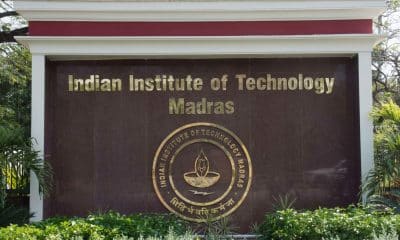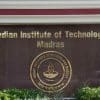Technology
India Innovates Technology That Generates Hydrogen Directly from Agricultural Residue
Will be a key contributor to India’s National Hydrogen Mission Technology to equip farmers in India to monetize over 200 million tons of unutilized agricultural residue Positive impact to the environment by modelling on circular economy Sentient Labs, an R&D innovation lab (incubated by KPIT Technologies with initial technical inputs) and MACS-Agharkar Research Institute (ARI), have developed the world’s first technology that generates hydrogen directly from agricultural residue for use in fuel cell-powered vehicles.
Sentient Labs’ vision is to build technology solutions for the electrification of mobility. It has identified bottlenecks in battery technology, fuel cell technologies, and technologies for hydrogen generation. Multiple efforts are underway to create the building blocks necessary for sustainable mobility. MACS-Agharkar Research Institute is committed to conduct basic as well as applied research in life sciences and harness the genetic diversity of microbes for bio-energy generation and has been working towards developing solutions which are appropriate for national use.
Also read: Niti Aayog releases handbook for EV charging infra implementation
Hydrogen fuel cell vehicle technology is estimated to be the next big step in the direction of sustainable mobility as it provides a large operating range, is suitable for commercial vehicles, and leaves a minimal environmental footprint. The need of the hour in crude oil-importing nations is to rapidly move towards self-reliant energy sources and sustainable mobility. The hydrogen generated from this technology will be utilized to power fuel cell vehicles that emit only water, thus making the entire cycle pollution-free.
This hydrogen generation technology uses agricultural residue rich in cellulose and hemicellulose content in likes of paddy, wheat, or maize residue. The process uses microbial culture for the direct generation of hydrogen from agricultural residues. It further generates methane, which is utilized for producing additional hydrogen by steam methane reformation. This process can avoid the burning of bio-mass generated in large measure in the Indian countryside and generate organic manure and CO2, which finds applications in various industries.
A pertinent sustainability aspect of the innovation is that it models on the circular economy. In India, approximately 200 million tons of unutilized agricultural residue is generated. This agricultural residue, which is burnt in most of the cases, can be fed into this process to generate hydrogen.
Mr. Ravi Pandit, Chairman, Sentient Labs said, “We incubated Sentient Labs to work on technology R&D projects related to mobility and energy. This innovation affirms our commitment to Mission Hydrogen and Make in India charter by the government. This breakthrough of generating hydrogen from unutilized agricultural residue will help us become self-reliant on energy resources. It will also add a major stream of revenue to the farmer community. We will continue R&D and invite partners to come on board for production and commercialising the same.
Dr. Prashant Dhakephalkar, Director, Agharkar Research Institute, said, “Our technology is 25% more efficient as compared to conventional anaerobic digestion processes used today. The innovative two stage process eliminates the pre-treatment of the biomass, thus making the process economical and environment friendly. This biologically benign process generates digestate rich in nutrients which can be used as organic fertilizer. Its by-products can be used as soil conditioners while undigested solids for briquetting that can be sold as solid fuel. I thank the scientists and engineers at Agharkar Research Institute & Sentient Labs for this achievement.
Mr. Pawan Sharma, President & CEO, Sentient Labs said, The milestone in collaboration with Sentient Labs has the potential to radically transform the agricultural industry and garner new sources of value-creation. It will improve India’s self-reliance in creating cleaner and sustainable solutions for the energy and transportation sectors and will help India comply with the Paris Climate Change agreement.
The key members of the team that worked on this technology are Dr. Prashant Dhakephalkar and Dr. Sumit Singh Dagar from Agharkar Research Institute and Mr. Kaustubh Pathak from Sentient Labs.









































